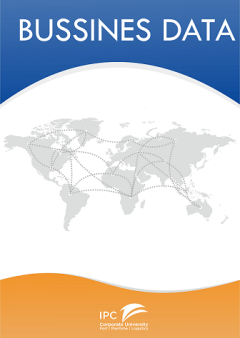Ditapis dengan

Impacts of new routes and ports on spatial competition for containerized impo…
Major changes are occurring in the logistics of container shipping including growth in demands, increased ship size and development of new ports and routes to serve the US market. The Panama Canal is in the process of being expanded and potential exists for shipping through the Northwest Passage in addition to new ports being developed on the West Coasts of Canada and Mexico. All these alternat…
- Edisi
- VOL. 39, NO. 5, 479–501
- ISBN/ISSN
- 1464–5254
- Deskripsi Fisik
- 25 p.
- Judul Seri
- Maritime Policy & Management: The flagship journal of international shipping and port research
- No. Panggil
- ATC LO FAN i

Potential methods of adjustment to declining imports of Russian roundwood for…
The purpose of this paper is to investigate optimal strategic decision alternatives for Finnish pulp production companies in response to rising export tariffs on Russian roundwood. Traditionally, increasing the domestic or Russian supply to pulp mills satisfied their wood requirements. However, once this conventional strategy could no longer be implemented (in 2008), the wood requirements were …
- Edisi
- Vol. 22 No. 2, 2011
- ISBN/ISSN
- -
- Deskripsi Fisik
- 22 p.
- Judul Seri
- The International Journal of Logistics Management
- No. Panggil
- ATC LO VES p

Port and modal allocation of waterborne containerized imports from Asia to th…
An economic optimization model of waterborne containerized imports from Asia to the USA is described. Imports are allocated to alternative ports and logistics channels so as to minimize total transportation and inventory costs for each importer. Logistics channels include direct shipment of marine containers via truck or rail, and trans-loading in the hinterlands of the ports of entry from mari…
- Edisi
- -
- ISBN/ISSN
- -
- Deskripsi Fisik
- 20 p.
- Judul Seri
- -
- No. Panggil
- ATC PO LEA p

Government Initiatives To Localise Drug Production Will Reduce Reliance On Im…
Indonesia ' s pharmaceutical market, the largest in South East Asia, will see continued foreign drugmaker investment and the manufacturing of pharmaceutical raw materials in the country will increase following the revision of the country's Negative Investment L ist. In addition, t he government ' s incentive to develop the domestic pharmaceutical industry and reduce its reliance on …
- Edisi
- -
- ISBN/ISSN
- -
- Deskripsi Fisik
- 3 p.
- Judul Seri
- -
- No. Panggil
- BD BMI g

Smart and safe borders: the logistics of inbound cargo security
In this paper, the changes that have taken place since September 11, 2001 regarding cargo inbound to the United States are examined. An appraisal of the new rules proposed by the U.S. Bureau of Customs and Border Protection is provided along with an evaluation, using a game‐theoretic model, of how shippers and carriers may be expected to adapt to this new set of regulations. Since Canada is…
- Edisi
- Vol. 15 Issue: 2, pp.65-76
- ISBN/ISSN
- -
- Deskripsi Fisik
- 13 p.
- Judul Seri
- The International Journal of Logistics Management
- No. Panggil
- ATC LO PRO s

International logistics and one-stop shopping
One‐stop shopping for logistics services has been a popular concept in theory, but so far has not been very successful in practice. Reviews the theoretical basis for the concept and reports the findings of a shipper‐carrier comparison study about one‐stop shopping expectations for international logistics services. Shows that international shippers located in the USA rate the expected ef…
- Edisi
- Vol. 25 Issue: 10, pp.26-44
- ISBN/ISSN
- -
- Deskripsi Fisik
- 21 p .
- Judul Seri
- International Journal of Physical Distribution & Logistics Management,
- No. Panggil
- ATC LO SEM i

International containership carrier selection criteria: Shippers/carriers dif…
Examines the difference in perceptions of 18 carrier selections factors between import shippers, export shippers, and international containership carriers. MANOVA was used to determine differences between the three groups. Suggests that there are significant differences between import shippers and carriers; export shippers and carriers; and import shippers and export shippers. Significant diffe…
- Edisi
- Vol. 29 No. 6, 1999, pp. 398-408.
- ISBN/ISSN
- -
- Deskripsi Fisik
- 14 p.
- Judul Seri
- International Journal of Physical Distribution & Logistics Management
- No. Panggil
- ATC LO PAR i

Evaluation of alternative logistics operations for the national supply of an …
Describes the analysis of the logistics system of a supplier of anhydrous sodium sulphate to the Australian market. This examination considered the total cost and customer service implications of the present supply of this bulk product from one Canadian and US west coast source, its unloading at three Australian ports and subsequent distribution to customers in major Australian markets. Exami…
- Edisi
- Vol. 28 Issue: 5, pp.382-395
- ISBN/ISSN
- -
- Deskripsi Fisik
- 15 p.
- Judul Seri
- International Journal of Physical Distribution & Logistics Management
- No. Panggil
- ATC LO GIL e

The role of benchmarking in the performance of the import process
Any firm participating in external (or inter-firm) benchmarking anticipates at least two benefits: useful statistics on how it performs relative to the other participating firms; and guidance in identifying promising performance improvement actions. Using data from a five-year benchmarking program for firms engaged in import operations, this research illustrates how these benefits might be assu…
- Edisi
- Vol. 29 No. 9, 1999
- ISBN/ISSN
- -
- Deskripsi Fisik
- 20 p.
- Judul Seri
- International Journal of Physical Distribution & Logistics
- No. Panggil
- ATC LO YOU t
 Karya Umum
Karya Umum  Filsafat
Filsafat  Agama
Agama  Ilmu-ilmu Sosial
Ilmu-ilmu Sosial  Bahasa
Bahasa  Ilmu-ilmu Murni
Ilmu-ilmu Murni  Ilmu-ilmu Terapan
Ilmu-ilmu Terapan  Kesenian, Hiburan, dan Olahraga
Kesenian, Hiburan, dan Olahraga  Kesusastraan
Kesusastraan  Geografi dan Sejarah
Geografi dan Sejarah